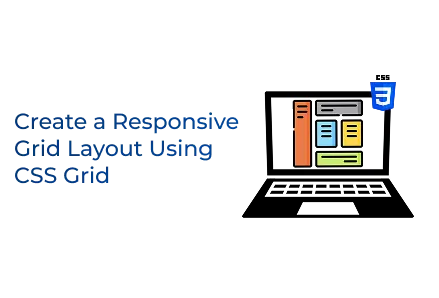Home - Scripts - Website Development

Mastering CSS Grid enables developers to create responsive layouts, improve design consistency, boost accessibility and craft modern websites that perform smoothly across all devices.
Key Points
In today’s digital era, businesses need websites that are not only visually appealing but also flexible, responsive, and simple to manage. This is where a custom website becomes essential, forming a key part of modern business success. Whether you're providing professional website development services and running a leading web development company, mastering modern layout techniques like CSS Grid is crucial.
Creating flexible and responsive layouts is a key component of high-quality custom web development. Among the many tools available, CSS Grid stands out as one of the most powerful and versatile options for building structured, responsive web designs.
In this article, we’ll guide you through creating a responsive grid layout with HTML and CSS, an important skill for developers and teams building professional, scalable websites.
Let’s start with the HTML markup:
This layout uses semantic HTML elements like:
These tags improve:
Accessibility — screen readers understand your content better.
SEO — search engines favour semantic content.
Maintainability — easier to read, maintain, and scale.
Everything sits inside a layout wrapper so that CSS Grid can control the page structure.
For anyone delivering custom web development services, following semantic and accessible HTML practices is essential.
Modern layouts need clean, scalable code. Let’s look at the CSS that transforms our HTML into a polished design.
We begin by setting some foundational styles:
The core of our layout is the grid itself:
This setup creates:
Columns are defined as:
Rows adjust based on their content, ensuring your layout fits any screen height — a critical part of delivering high-end website development services.
Let’s style each section for visual clarity.
A striking header sets a professional tone, vital for any web development company looking to showcase its brand.
Navigation menus are a core component of custom web development, offering users an intuitive way to explore your website.
The main content area should always be clean and readable, crucial for any website development services focusing on user experience.
Sidebars are perfect for additional content such as ads, recent posts, or call-to-action links.
A professional footer provides important information and brand consistency, essential in custom web development.
Modern web design requires mobile-first thinking. Here’s how we adjust our layout for smaller screens:
This media query collapses the grid into a single column on devices like tablets and smartphones, ensuring excellent mobile usability. Responsive design is non-negotiable for any web development company offering professional services.
Finally, let’s clean up our navigation links:
Clean navigation is a hallmark of good custom web development, improving usability and user engagement.
CSS Grid offers a flexible, modern approach to creating layouts that adjust to any screen. For businesses providing website development services, it’s a game-changer because it:
If you’re planning to grow your team or develop sophisticated projects, remember that you can hire PHP developers or front-end specialists skilled in modern technologies like CSS Grid to ensure your website meets the highest standards.
Whether you’re developing your own website, working for a web development firm, or providing customised web development solutions, understanding CSS Grid is crucial for contemporary web layouts.
By mastering these techniques, you’ll provide top-notch website development services that stand out for both design and performance.
Looking to scale your next web project? Don’t hesitate to hire PHP developers or skilled front-end professionals who can use tools like CSS Grid to turn your vision into reality.

©2025Digittrix Infotech Private Limited , All rights reserved.